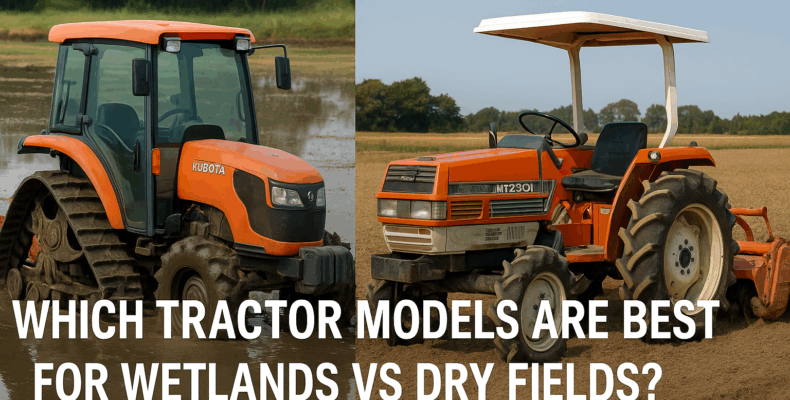Which Tractor Models Are Best for Wetlands vs Dry Fields?
Japanese used tractors are highly sought after worldwide because of their durability, advanced engineering, and cost-effectiveness. Farmers across Asia, Africa, and South America rely on them to handle different terrains. However, choosing the right model depends heavily on whether your farm operates in wetlands or dry fields. Making the correct decision ensures higher productivity, fewer breakdowns, and improved efficiency.
Tractors for Wetlands
Wetland farming, such as rice cultivation, demands tractors with specific features. First, lightweight models are essential to prevent sinking into muddy fields. Additionally, wide tires or crawler tracks provide stability and reduce soil compaction. Japanese brands like Kubota and Yanmar are well known for their compact wetland models designed precisely for paddy fields.
Moreover, waterproof sealing around key components protects engines and transmissions from moisture damage. Farmers working in wetlands should also prioritize tractors with excellent maneuverability, as turning space is often limited in waterlogged areas. By choosing these models, operators save both time and repair costs.
Tractors for Dry Fields
Dry field farming requires different strengths. Unlike wetlands, dry fields benefit from tractors with higher horsepower, strong hydraulics, and heavier frames for pulling large implements. For example, Isuzu- and Mitsubishi-powered tractors are often used for heavy tillage, plowing, and transporting goods over long distances.
Furthermore, dry field conditions make it easier to use large tires that increase traction and support heavy loads. Farmers who operate in areas with little rainfall often prefer models with fuel efficiency and robust cooling systems to handle long working hours. In short, durability and power are the most critical factors for dry field tractors.
Key Differences to Consider
When comparing tractors for wetlands and dry fields, buyers should focus on weight, tire design, and engine capacity. Wetland tractors are typically smaller, lighter, and more agile, while dry field tractors are stronger and built to manage heavy-duty tasks. Therefore, it is crucial to match the machine’s features to your farm’s environment before making a purchase.
The Importance of Choosing Reliable Exporters
Selecting the correct tractor model is only part of the process. Importing through a trusted Japanese exporter guarantees that you receive genuine machines in excellent condition. Professional exporters also provide accurate inspection reports and offer post-sale support.
To help buyers make the right choice, here is a recommended resource: Top 5 Trusted Japanese Used Truck Exporters for Global Buyers. These companies, based in Japan, have extensive experience in exporting tractors, trucks, and other vehicles worldwide. You can read more here:
👉 Top Recommended Japanese Used Car Export Companies for International Customers
By working with reliable exporters, international farmers gain peace of mind knowing their tractors will arrive safely and ready for operation.
Final Thoughts
Japanese used tractors deliver outstanding value for both wetlands and dry fields. Wetland farmers should prioritize lightweight, maneuverable models, while dry field farmers should focus on power and durability. With the right tractor and essential maintenance, productivity increases, and downtime decreases.
Finally, always partner with a trusted Japanese exporter to ensure smooth transactions and secure deliveries. A carefully chosen tractor today can power your farm for decades to come.
